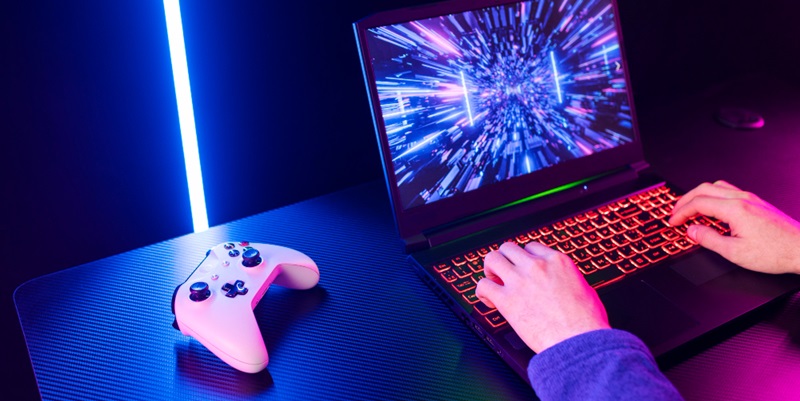As technology continues to advance at a rapid pace, Intel’s highly anticipated Meteor Lake CPUs are set to make their grand entrance into the laptop market this December. With promises of enhanced performance, energy efficiency, and a breakthrough in integrated GPU capabilities, Meteor Lake CPUs have become a hot topic of discussion among tech enthusiasts. In a recent demo, Intel showcased the power of these CPUs, particularly in conjunction with their game-changing XeSS technology, providing a glimpse into the potential future of laptop gaming.
During the demo, Intel exhibited the Meteor Lake processor effortlessly running the visually stunning Dying Light 2, one of the most demanding games on the market. What caught the attention of onlookers was the frame rate boost achieved by utilizing Intel’s innovative XeSS (Xe Super Sampling) technology. Thanks to XeSS, the game ran smoother than ever before, providing an immersive experience that pushed the boundaries of integrated GPU performance.
Performance Boost with Xe-LPG Integrated GPU
The true star of the show, however, was the Xe-LPG integrated GPU found within the Meteor Lake CPUs. Intel proudly revealed that Dying Light 2 experienced a remarkable 1.7x increase in speed with XeSS enabled, compared to running the game without it. This milestone marked the first time Intel demonstrated XeSS on an Xe integrated GPU, showcasing the immense potential of this technology to revolutionize the gaming experience on laptops.
Implications for Integrated GPUs
The integration of the Xe-LPG GPU and XeSS technology within the Meteor Lake CPUs represents a significant step forward for integrated GPUs. Traditionally, integrated GPUs have been overshadowed by their discrete counterparts, which offer superior graphics performance. However, with the advent of Meteor Lake, Intel aims to bridge this gap, enabling integrated GPUs to deliver a level of performance comparable to that of discrete graphics cards.
Benefits of Ditching the Discrete Graphics Card
One of the most compelling advantages of this advancement is the elimination of the need for a separate discrete graphics card in laptops. Not only does this significantly cut down the cost of the laptop, but it also leads to a reduction in power consumption, resulting in longer battery life. For budget-conscious consumers, this leap in integrated GPU performance could make high-quality gaming more accessible and affordable.
XeSS as a Requirement for Performance Boost
It is important to note that achieving the remarkable performance boost witnessed during the demo requires the implementation and support of XeSS technology. Games need to integrate XeSS to take full advantage of the enhanced framerate and visual quality. However, the number of titles that support XeSS is growing steadily, indicating a promising future for this technology and its compatibility with an expanding library of games.
Future Outlook of Integrated GPUs
With the success of the Meteor Lake CPUs and their Xe-LPG integrated GPUs, we catch a glimpse of a future where integrated GPUs could outshine their discrete counterparts in the realm of laptops. While high-end gaming notebooks may still rely on dedicated graphics cards for the foreseeable future, the growing capabilities of integrated GPUs will undoubtedly lead to an increased market share for non-high-end laptop models. As technology progresses, we can expect more affordable laptops with impressive gaming performance, courtesy of the power-packed Meteor Lake CPUs.
Intel’s Meteor Lake CPUs, set to arrive in December, along with the Xe-LPG integrated GPU and XeSS technology, represent a game-changing advancement in laptop performance. The ability to achieve performance levels comparable to discrete graphics cards without the need for a separate GPU offers significant advantages in terms of cost and power consumption. While XeSS integration is a prerequisite for this performance boost, the growing number of supported games indicates a promising future for this innovative technology. With the potential to reshape the laptop gaming landscape, the introduction of Meteor Lake CPUs and their integrated GPUs highlights the remarkable progress made in the realm of integrated graphics and holds the promise of an exciting future for laptop gaming enthusiasts.

